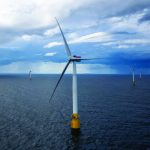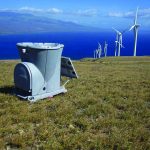In support of the Biden-Harris administration’s goals for deploying 30 GW of offshore wind energy capacity by 2030 and 15 GW of floating offshore wind energy capacity by 2035, the Bureau of Ocean Energy Management has announced the designation of two final Wind Energy Areas (WEAs) offshore Oregon. The WEAs were developed following extensive engagement and feedback from the state, Tribes, local residents, ocean users, federal government partners, and other members of the public. The final WEAs are based on reducing potential conflicts of ocean users, particularly on commercial fishing.
The two WEAs total about 195,012 acres, and they avoid 98 percent of the areas recommended for exclusion due to their importance as commercial fishing grounds. The Coos Bay WEA is 61,204 acres and is 32 miles from shore. The Brookings WEA is 133,808 acres and is about 18 miles from shore.

“BOEM values its close coordination with the State of Oregon as we continue to work together to maintain a robust and transparent offshore wind planning process,” said BOEM Director Elizabeth Klein. “We will continue to work closely with Tribal governments, federal and state government agencies, ocean users, coastal communities and all interested stakeholders as we move forward with our environmental review.”
BOEM’s Federal Register notice will initiate a 30-day public comment period. Another public comment period would occur if BOEM decides to move forward with a lease sale in either of the WEAs.
In addition to engaging with the State, Tribes, coastal communities and ocean users, BOEM partnered with the National Oceanic and Atmospheric Administration’s National Centers for Coastal Ocean Science (NCCOS) to assess opportunities for wind-energy development and reduce or avoid impacts on other important ocean uses in Oregon. The agencies developed a comprehensive, ecosystem-based ocean planning model that leverages the best available data on natural resources, ocean industries such as fisheries and energy production, and areas of national security activities to identify areas with high wind-energy resource potential and fewer potential impacts to other ocean users and sensitive environmental resources. This approach provided valuable insights about the seascape and its uses and facilitated greater transparency and positive coordination with government partners and ocean stakeholders through direct engagement and incorporation of their feedback into the NCCOS model.
Since the start of the Biden administration, the Department of the Interior has approved the nation’s first six commercial-scale offshore wind energy projects. BOEM has held four offshore wind lease auctions, which have brought in almost $5.5 billion in high bids, including a sale offshore New York and New Jersey and the first sales offshore the Pacific and Gulf of Mexico coasts. BOEM is exploring opportunities for offshore wind energy development in the U.S., including in the Gulf of Maine and the U.S. Central Atlantic coast. The Department also continues to take steps to evolve its approach to offshore wind to drive towards union-built projects and a domestic-based supply chain.
More info www.boem.gov/newsroom




































